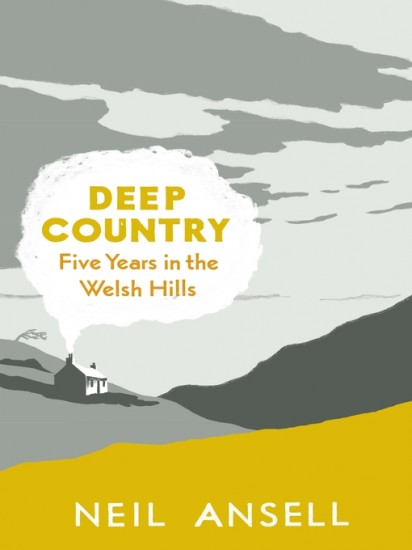A book by Neil Ansell
Reviewed by Neil Sentance
Caught By The River readers may well be predisposed to love this book, published by Hamish Hamilton, the imprint of Penguin that published the CBTR godhead, Roger Deakin. Neil Ansell, in true Walden style, leaves civilisation at the age of 30 and spends five years living in a remote cottage in the Welsh hills, as he says ‘between the back of beyond and the middle of nowhere’, solitary living without electricity, gas or water. Submerged in this empty quarter, his sense of self begins to strip away and he gradually becomes subsumed into the natural world around him. He may not see a soul for weeks on end, and can, impressively on this small clamorous island, walk west for twenty miles without seeing another dwelling or road or fence. But for the birds, bats, polecats, field mice and butterflies, he develops an almost Franciscan care.
The tradition of back-to-nature writing stretches all the way back to the nineteenth-century transcendentalists like Thoreau and beyond. Often we hear of the hero-crank or hermit-saint, escaping from the rupture and disjunction of the industrialised or blandly suburbanised world, in search of meaning and sustenance in the wild. This book is part of that tradition and also sits within the recent resurgence of British nature writing, but its narrative arc is somewhat different. Whilst the author learns to live on his inner resources, embracing a life of quiet self-reliance and joy in his own society on a journey to a mindful peace, he says, ‘solitude did not breed introspection, quite the reverse’. He constantly looks outward and steadily becomes part of the landscape, a landscape unpeopled but full of life, a man alone but never anchored in loneliness. Immersed in the natural world, watching and thinking as the fauna all around, he rediscovers something elemental, a keen awareness of being, something like what JA Baker relates of his almost-avian transformation in The Peregrine. His mental maps become ones inscribed with the need for food, shelter, fuel, and also regard and respect for the creatures he shares his life with. He keeps a log of sightings that completely takes over his daily diary and records data for the local wildlife field centre. Ansell says, ‘I began to forget myself, my focus shifted almost entirely outwards to the natural world outside my window’. Rather than his inward journey, we travel with the author on the outer ones, taken to goshawks and goldcrests, to hidden badger setts and the curlew moorlands. Written with ardent detail and a simple, sparely rendered poetry – rooks are ‘bare-faced and baggy-trousered’, ‘bracken buzzes with winchats’, peregrines ‘dash over the crags’ – this fine book echoes two rather neglected but enriching classics of modern-day anchorites in John Pepper’s Cockley Beck and John Wyatt’s The Shining Levels.
As Donne wrote, ‘no man is an island, entire of itself’. In the end it is the biological imperative that brings the author back, a brush with serious illness and the need for a family that reconnects him with the main. But now living amongst the throng again, Ansell has absorbed all that his time in the hills taught him and he still visits the cottage regularly, with his children, or alone again.
A bank clerk who joined the Bank of Scotland in 1899 said: ‘we climb upwards on the stepping stones of our own dead selves’. For those of us enslaved by mortgages and consumerism or dull work, living lives of Thoreau’s ‘quiet desperation’ or yearning for simple living and self-sufficiency, this book will resonate with its many epiphanies. The Norwegian philosopher Arne Næss created the concept of deep ecology, one that is eco-centric, placing equal weight on the creatures and natural features with whom we share the planet. Neil Ansell’s Deep Country is a lucid hymn to that ideal, to the potential for nature and humanity coupled. This a dreamer’s book with its feet firmly planted on the rich earth.
